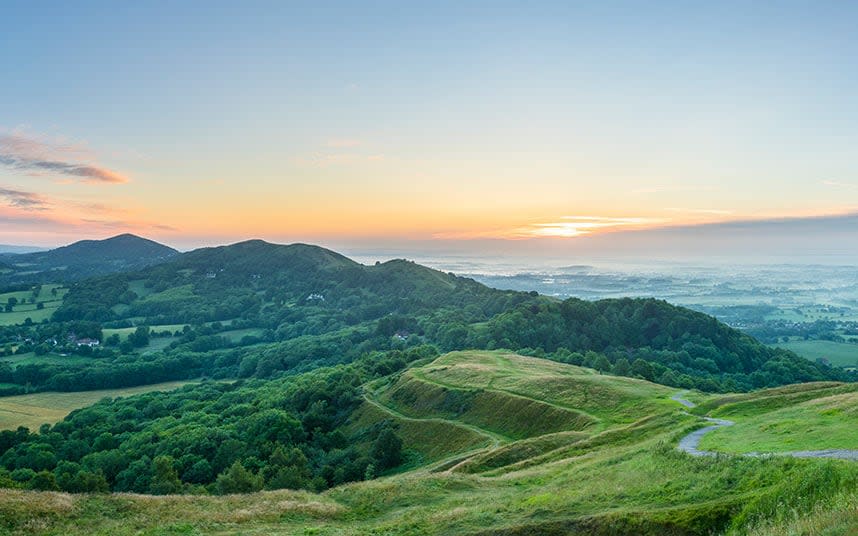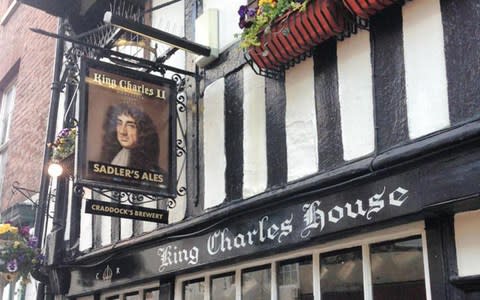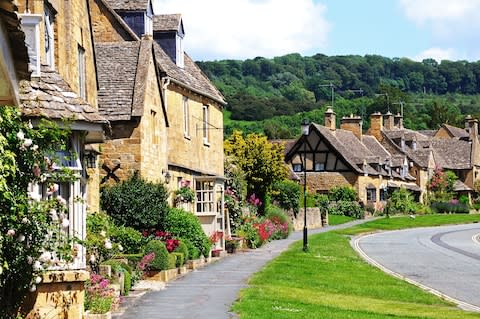Why wonderful Worcestershire is England’s most underrated county

Yes, where the sauce is from. Honestly, after all Worcestershire has given to this ungrateful nation, must its status in the collective psyche really boil down to a fermented condiment?
Apparently so. Forget Elgar, the Civil War or the landscapes that inspired Tolkien, when my county crops up in conversation all most people want to talk about is the sauce. Makes me sick. I blame the anchovies.
Well enough. It’s time to change the tune and put forward Worcestershire’s case for “England’s most underrated county”. Because it is. We’ve heard laudable counter claims on these pages recently, but come now, surely we have a winner?
The opening salvo is this: modern Britain was born in a field in Worcestershire. Hyperbole? Only slightly. Historians widely agree that the English Civil War (1642-1651), which set our nation on a path to democracy, began and ended in Worcestershire.
The clash that kicked it all off took place in unassuming Powick, a small village near the Malvern Hills, while the fight that finished it was the bloody Battle of Worcester, which ended in defeat for Charles II.
He escaped Cromwell’s New Model Army (and the fate of his father, who had his head lopped off) by fleeing to France, but not before stopping for a swift pint at 29 New Street, which is now one of Worcester’s most cherished boozers: the aptly-named King Charles House.

Going off on a tangent briefly, Worcester, the city of my birth, is full of fine pubs. The best are housed in the wonky buildings of Friar Street and New Street, where they rub along rather uneasily with more modern establishments such as Sin and Bushwackers (the last time I checked you could drink five bottles of WKD, snog a hairdresser and get headbutted in Sin for less than £20).
Like many British cities, Worcester was a victim of disastrous post-war planning. Its timeworn Tudor buildings and grandiose Victorian architecture, therefore, which were built while the city got rich off Royal Worcester Porcelain and glove making, jar somewhat with modern monstrosities like Crowngate Shopping Centre and Elgar House.
Edward Elgar, of course, being the county’s most notable former inhabitant. Underrated at the time, the musician’s lauded compositions have since earned their rightful place in the international classical concert repertoire.

Despite the efforts of town planners, however, Worcester remains rather beautiful. Carved in two by the River Severn – Britain’s longest waterway – the city’s skyline is dominated by Worcester Cathedral (as seen on the back of the old £20 note), where visitors will find the tombs of King John and Prince Arthur. This imposing, Gothic structure looms large over nearby Worcester County Cricket Club, which is touted as the prettiest in England.
Another architectural highlight is the 68-arch Victorian railway viaduct, which tiptoes over Worcester Racecourse and The Hive, a gilded, love-it-or-hate-it library that was opened by the Queen to much fanfare in 2012 (I’m a lover, incidentally).
That railway rattles along to nearby Great Malvern, a winsome town that sits in the shadows of the Malvern Hills. The loftiest peak of this Area of Outstanding Natural Beauty is the windswept Worcestershire Beacon, which sits 425m above sea level; on a fine day this popular lookout spot offers views of the Cotswolds to the east and the Black Mountains in Wales to the west. There are also pretty panoramas across neighbouring Herefordshire, with whom Worcestershire entered into an ill-fated marriage in 1974 - the unhappy couple divorced in 1998, but remain friends.

Malvern has many a claim to fame. The following are in no particular order: William Langland’s 14th-century poem, Piers Plowman, was inspired by the hills; the lamp at the base of the town’s 99 steps is where C S Lewis had the lightbulb moment that led to the opening of Narnia; Lewis’s great friend, Tolkien, meanwhile found inspiration for his novels in the surrounding countryside; Charles Darwin’s daughter, Anne, is buried in Great Malvern Priory churchyard; and Haile Selassie, former Emperor of Ethiopia, once stayed at the town’s Abbey Hotel.
Malvern is also revered for its freshwater springs, which once attracted wellness-seeking visitors from across the country, including Darwin and his sick daughter, for whom the restorative powers of Malvern water could not, alas, prevent death.
Southern Worcestershire also overlaps the Cotswolds. In fact, the village of Broadway, with its honey-coloured cottages and hilly surrounds, is regularly touted as the “jewel of the Cotswolds” (much to the ire of towns in neighbouring Warwickshire and Gloucestershire).

Things get more industrial as we head north, with Worcestershire rolling into the smut-belching powerhouse that is Brum. England’s second city exerts a strong influence here; workers in its dark satanic mills have long swelled the ranks of “I passed through them once” towns such as Redditch, Kidderminster (“Kiddy”) and Bromsgrove.
Likewise Droitwich Spa, where I grew up, thrived under the Romans: our continental overlords exploited the town’s underground salt streams and used the “white gold” to pay their marauding soldiers, hence the term “salary”.
A particular highlight of northwest Worcestershire is the Wyre Forest, which straddles the border with Shropshire. The River Severn is also especially beautiful up here, snaking as it does through pretty towns such as Bewdley and Stourport.
If you are planning a trip to Worcestershire, you could follow the latest happenings in the world’s oldest newspaper: the Berrow’s Worcester Journal, which I used to stuff through letterboxes on my paper round. There’s also a famous sauce that you might like to try, although I think I might have mentioned that.
More in this series
Why 'dull' Hertfordshire is England's most underrated county
In defence of the West Midlands, a little-loved county of hidden beauty
Why Cheshire is England's most underrated county
Why 'boring' Buckinghamshire is England's most underrated county
In praise of the Wirral, Britain's most underrated corner
Why sleepy Rutland is England's most underrated county
Do you think Worcestershire is England's most underrated county? Or perhaps you think your home county deserves the accolade. Join the conversation and leave us a comment below.



